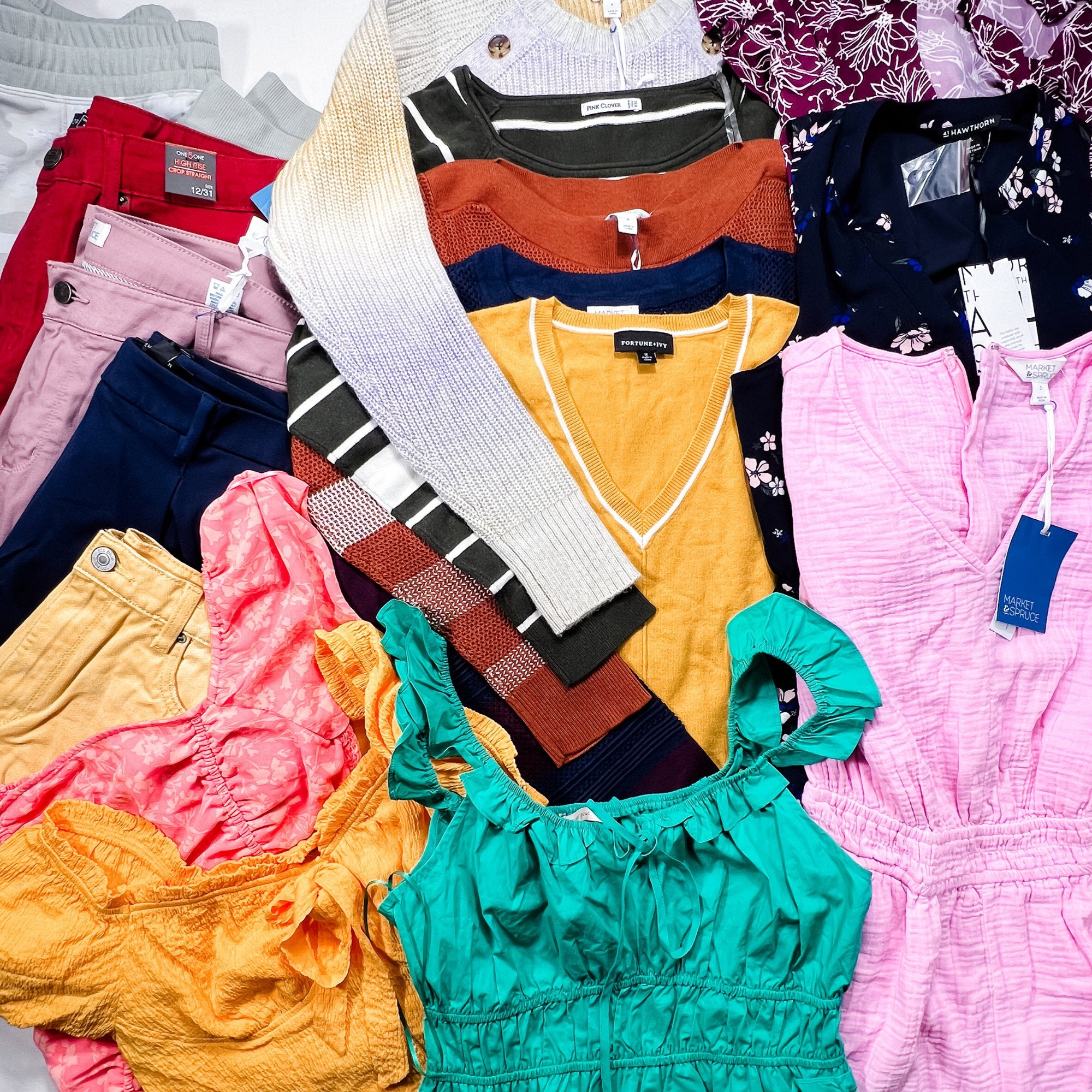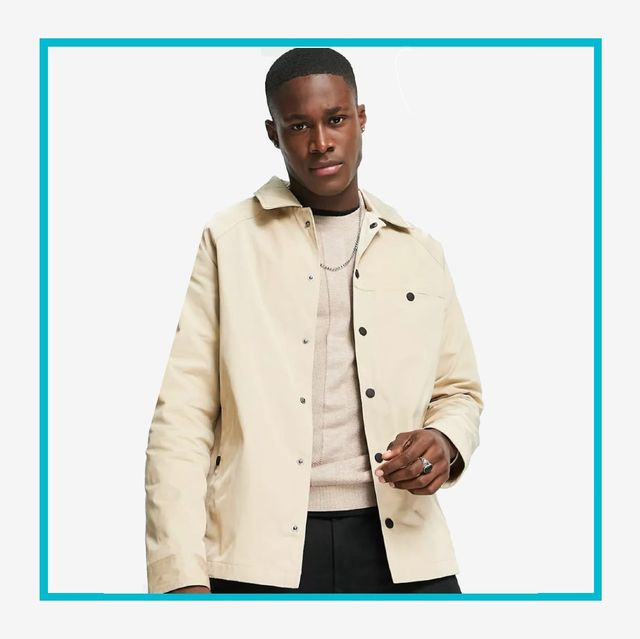The Role of Fabric in Defining Quality in Branded Clothing
The Role of Fabric in Defining Quality in Branded Clothing
Blog Article
Understanding Clothes: The Significance of Material Selections in Your Closet
The choice of textile in garments plays a crucial function in both looks and functionality. Various products supply varying levels of longevity, convenience, and breathability, directly influencing the user's experience. Comprehending these subtleties can improve one's wardrobe considerably. Yet, several overlook just how these choices can impact not just personal style, yet also sustainability. What textile decisions could redefine your wardrobe and align it with both design and obligation?
The Role of Fabric in vogue and Performance

Usual Material Types and Their Characteristics
When selecting clothes, understanding the attributes of common fabric types is important for making informed selections. Cotton, a widely-used natural fiber, is known for its breathability, gentleness, and versatility, making it appropriate for informal wear and everyday garments. Bed linen, one more natural alternative, boasts superb moisture-wicking residential properties and a distinct appearance, suitable for cozy climates.Wool, often favored for its warmth and sturdiness, varies in fineness; merino woollen is soft versus the skin, while coarser types are utilized for outerwear. Artificial fabrics like polyester and nylon supply resilience and resistance to wrinkles, making them prominent for activewear and travel garments. Lastly, blends, which integrate artificial and all-natural fibers, can enhance capability while maintaining comfort. By recognizing these textile attributes, people can choose garments that lines up with their way of life and aesthetic choices.
Breathability and Convenience: Selecting the Right Fabrics for Different Environments
Selecting the ideal materials for various environments can substantially enhance convenience and total wearability. Breathable materials are vital in hot climates, as they allow air circulation and moisture dissipation. Fabrics such as cotton, bed linen, and moisture-wicking synthetics successfully draw sweat far from the body, keeping the user cool and completely dry. Alternatively, in cooler climates, thicker materials like wool or fleece give insulation while preserving breathability, making certain warmth without overheating.Additionally, the selection of material weight plays an essential duty; light-weight textiles are more suitable for summer season, whereas heavier alternatives are suited for wintertime wear. Understanding the one-of-a-kind residential properties of each fabric makes it possible for individuals to dress properly for varying weather problems. Inevitably, picking comfortable and breathable materials customized to specific climates can substantially enhance everyday convenience and improve the general experience of using clothing.
Resilience and Care: How Textile Influences Longevity of Your Wardrobe
Picking the best products can significantly impact the durability and treatment needs of a wardrobe. Fabrics such as cotton and polyester are known for their resilience and ease of maintenance, making them suitable for daily wear. In contrast, delicate materials like silk and lace require even more mindful handling and specialized cleansing techniques, which can enhance the time and initiative required for care. Branded Clothing.Durability is likewise affected by the material's weave and finish; firmly woven fabrics tend to withstand wear and tear better than loosely woven choices. Additionally, synthetic blends usually provide enhanced toughness, combining the very best high qualities of several fibers.Understanding the treatment directions for each and every textile is vital, as incorrect drying or washing can cause premature wear. Ultimately, picking long lasting materials can result in a longer-lasting closet, minimizing the regularity of replacements and adding to a much more lasting fashion choice
The Impact of Material on Fit and Silhouette

Lasting Fabric Choices: Making Eco-Friendly Decisions
The influence of textile expands beyond fit and silhouette to encompass environmental aspects, prompting a growing passion in lasting material options. Green textiles, such as natural cotton, hemp, and Tencel, are getting traction among consumers who prioritize sustainability in their wardrobes. These materials are typically created with less chemicals and water, minimizing their environmental footprint.Additionally, recycled fabrics, made from post-consumer waste, offer a cutting-edge remedy to the textile sector's air pollution issue. Brands significantly embrace transparency in their sourcing techniques, permitting consumers to make informed choices about their purchases.Choosing sustainable textiles not only supports moral methods but also motivates the style industry to take on even more responsible manufacturing approaches. As understanding of environmental issues climbs, people are urged to reflect on the lasting effect of their material selections, fostering a movement in the direction of a more lasting and ecologically aware technique to fashion.
Elevating Style: Exactly How Fabric Can Transform a Clothing
While numerous may focus on color and cut when picking an attire, the selection of textile plays a necessary function in boosting design and boosting general look. Various materials communicate unique moods and messages; for instance, silk exhibits high-end and sophistication, while denim offers a laid-back, loosened up ambiance. The texture and drape of a material can substantially alter the shape, with structured materials providing a sleek appearance and softer ones creating an extra fluid, relaxed aesthetic.Moreover, the weight of the material affects wearability throughout periods. Light-weight textiles like linen and cotton are suitable for summer season, while larger materials such as woollen and velour give warmth and style in colder months. Comprehending fabric properties, such as breathability and stretch, additionally empowers individuals to make educated options that improve comfort without jeopardizing style. Ultimately, the best textile can change an attire from normal to phenomenal, making it an essential factor to consider in any type of closet.
Regularly Asked Concerns
Exactly how Do I Identify the Textile Web Content of My Garments?
To determine fabric find material, one can take a look at treatment labels, conduct melt examinations for fiber identification, or get in touch with textile swatches. These techniques assist set apart products, guaranteeing informed choices for garments care and maintenance in day-to-day wear.
Can Material Selection Affect My Mood or Self-confidence?
Material option can substantially influence an individual's mood and confidence. Branded Clothing. Particular materials might evoke feelings of convenience or style, while others can really feel uncomplimentary or limiting, eventually affecting self-perception and emotional well-being throughout the day
What Fabrics Are Finest for Delicate Skin?
For people with delicate skin, natural textiles like cotton, bamboo, and bed linen are often suggested. These products are breathable, hypoallergenic, and much less most likely to trigger inflammation, making them ideal selections for comfort and skin health and wellness.
How Do I Correctly Clean and Take Care Of Various Fabrics?
To appropriately clean and care for different textiles, one should think about each product's particular needs, including temperature setups, cleaning agents, and drying methods, ensuring long life and maintaining the material's initial top qualities for ideal usage.
Exist Details Fabrics for Athletic or Efficiency Put On?
Athletic or performance wear frequently makes use of fabrics such as nylon, polyester, and spandex. These products are made for moisture-wicking, breathability, and flexibility, enhancing movement and convenience during physical activities while providing resilience and support. On the other hand, in colder environments, thicker fabrics like woollen or fleece offer insulation while maintaining breathability, ensuring heat without overheating.Additionally, the selection of textile weight plays an important duty; light-weight materials are more suitable for summer season, whereas heavier alternatives are fit for winter wear. In contrast, delicate materials like silk and lace require even more mindful handling and specialized cleaning techniques, which can increase the time and initiative required for care.Durability is likewise affected by the material's weave and finish; firmly woven materials tend to withstand wear and tear much better than loosely woven alternatives. In comparison, stiff textiles can restrict motion however offer a classic, sleek look.Moreover, click this link the thickness and texture of the fabric can influence the visual perception of body form. The impact of textile prolongs beyond fit and silhouette to encompass environmental elements, prompting an expanding passion in sustainable material choices. The structure and drape of a fabric can substantially alter the shape, with organized textiles supplying a polished appearance and softer ones creating a much more fluid, relaxed aesthetic.Moreover, the weight of the textile affects wearability throughout seasons.
Report this page